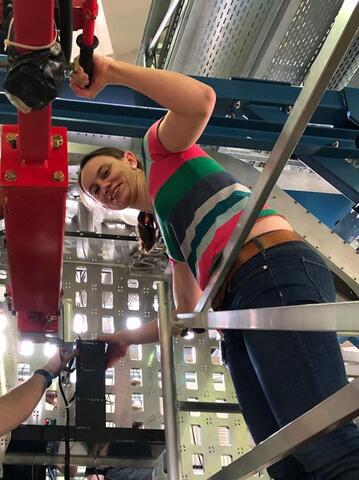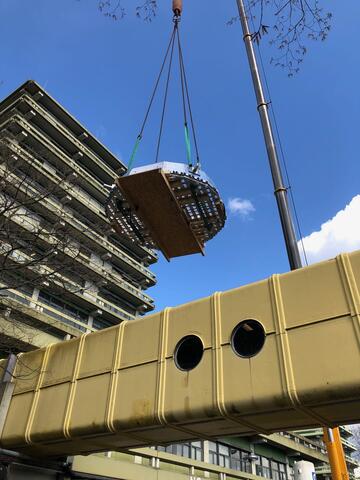Workshop „Physics Opportunities with Proton Beams at SIS100” was held in Wuppertal
PANDA meetings
04/03-08/03 2024 CM 24/1 in Münster
24/06-28/06 2024 CM 24/2 at GSI
25/06-26/06 2024 FEE/DAQ Workshop
04/11-06/11 2024 CM 24/3 at GSI
05/03-07/03 2025 WS at GSI
16/06-20/06 2025 CM 25 in Uppsala
Developments toward a Silicon Strip Tracker for the PANDA Experiment
Hans-Georg Zaunick
TH-PHD-2013-002.pdf
(26.7 MB)
The PANDA detector at the future FAIR facility in Darmstadt will be a key experiment in the understanding of the strong interaction at medium energies where perturbative models fail to describe the quark-quark interaction. An important feature of the detector system is the ability to reconstruct secondary decay vertices of short-lived intermediate states by means of a powerful particle tracking system with the the Micro-Vertex Detector (MVD) as central element to perform high-resolution charmonium and open-charm spectroscopy. The MVD is conceived with pixel detectors in the inner parts and double-sided silicon strip detectors at the outer half in a very lightweight design. The PANDA detector system shall be operated in a self-triggering broadband acquisition mode. Implications on the read-out electronics and the construction of the front-end assemblies are analyzed and evaluation of prototype DSSD-detectors wrt. signal-to-noise ratio, noise figures, charge sharing behavior, spacial resolution and radiation degradation discussed. Methods of electrical sensor characterization with different measurement setups are investigated which may be useful for future large-scale QA procedures. A novel algorithm for recovering multiple degenerate cluster hit patterns of double-sided strip sensors is introduced and a possible architecture of a Module Data Concentrator ASIC (MDC) aggregating multiple front-end data streams conceived. A first integrative concept for the construction and assembly of DSSD modules for the barrel part of the MVD is introduced as a conclusion of the thesis. Furthermore, a detailed description of a simplified procedure for the calculation of displacement damage in compound materials is given as reference which was found useful for the retrieval of non-ionizing energy loss for materials other than silicon.





